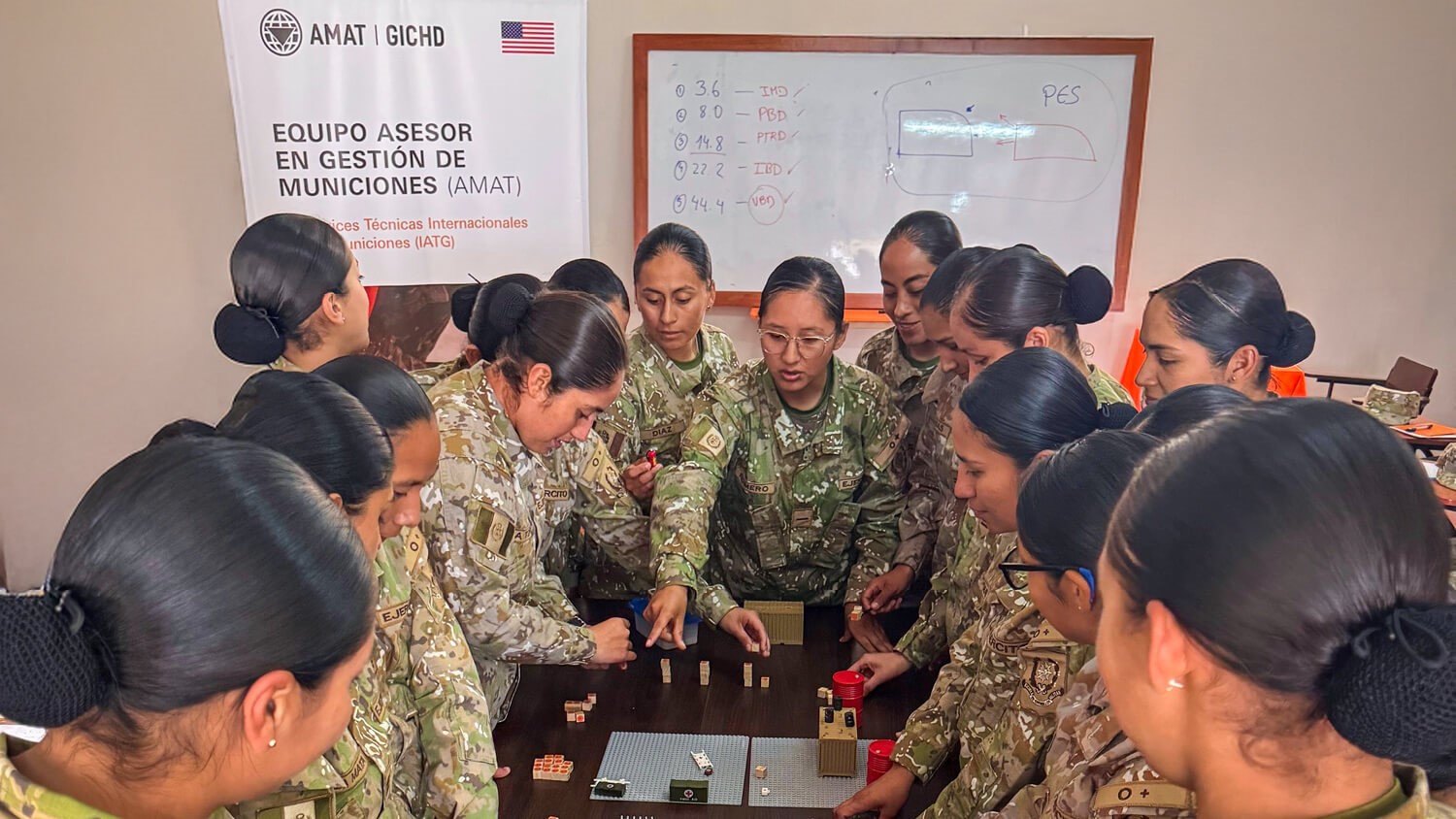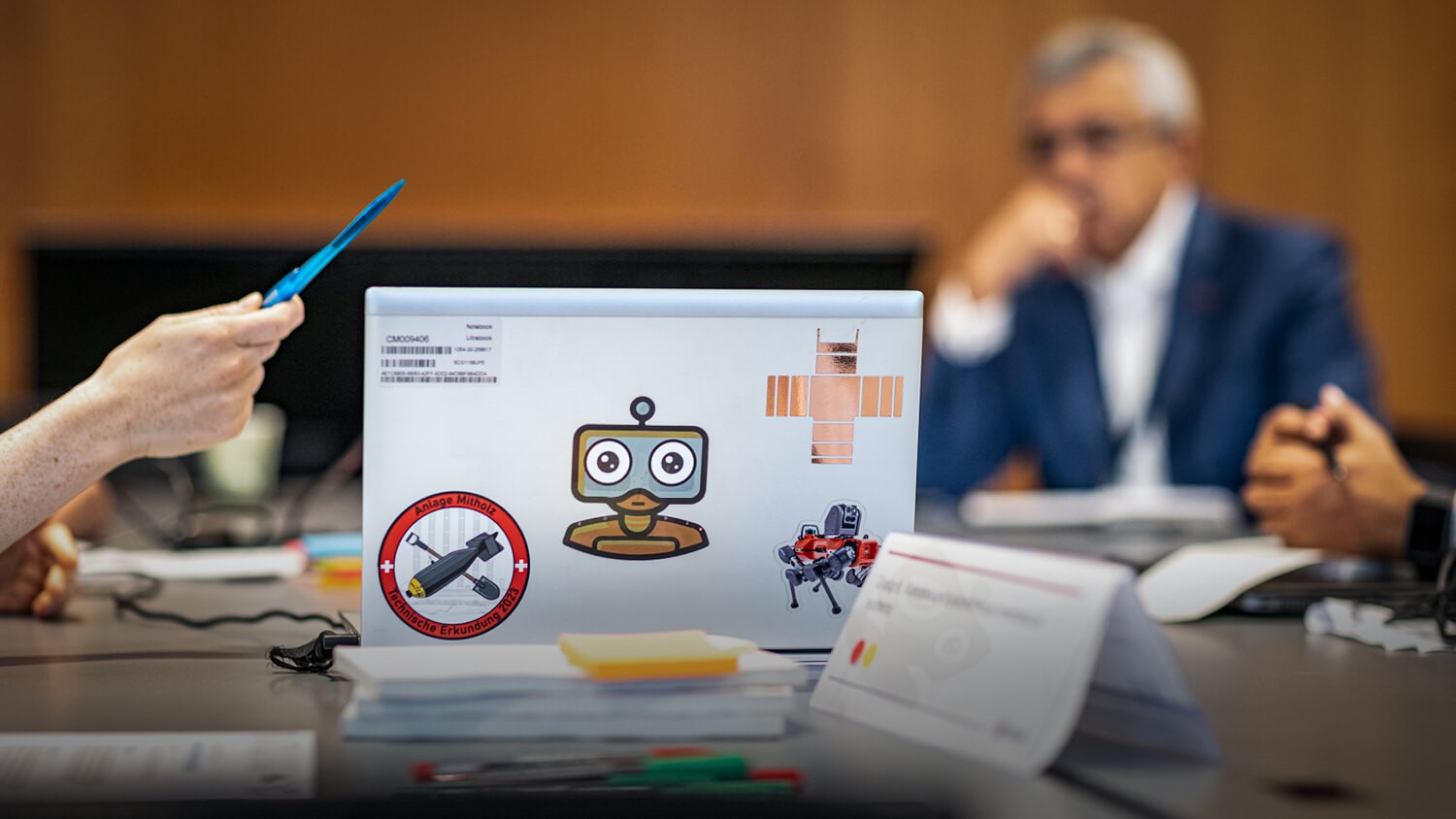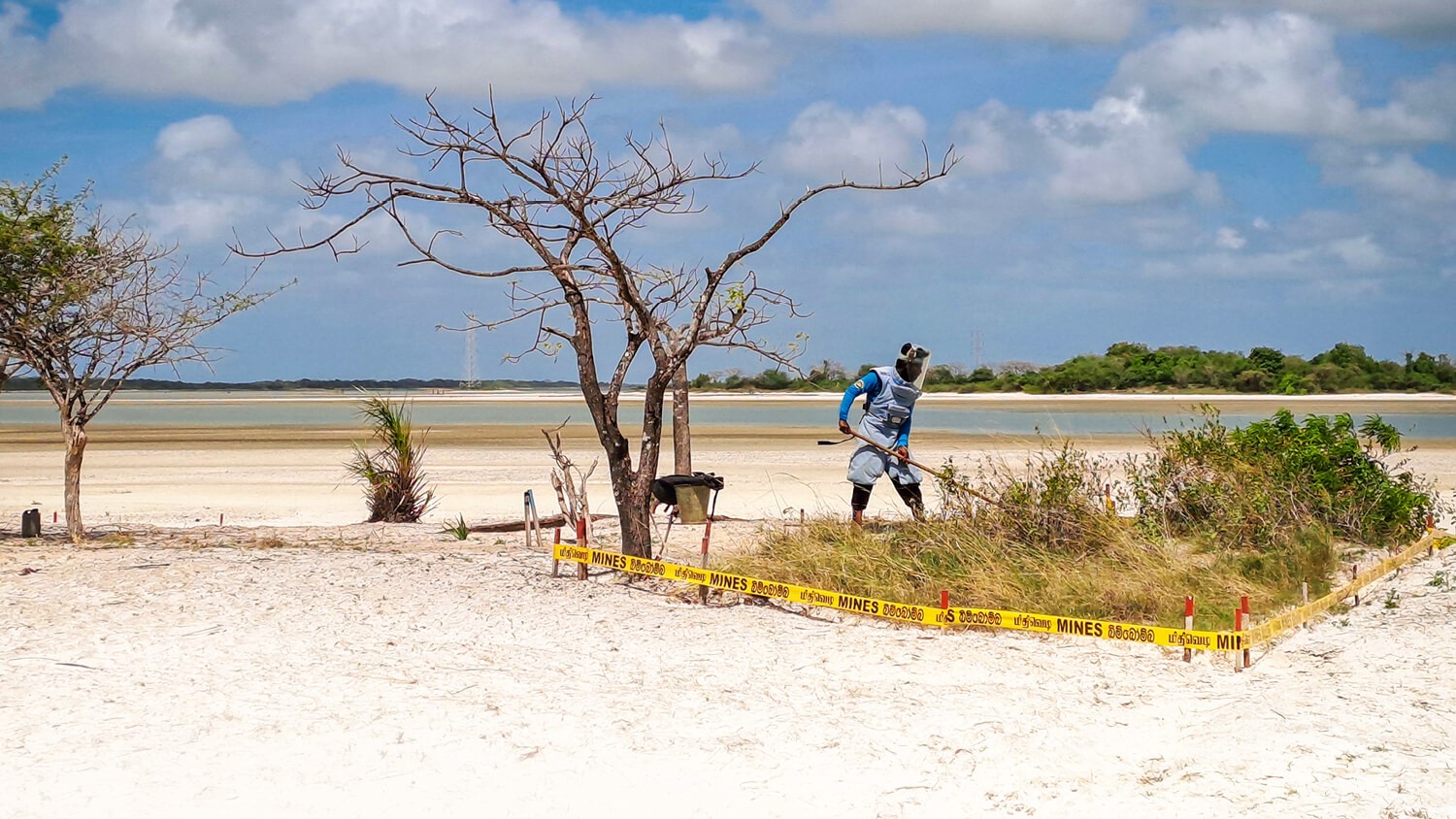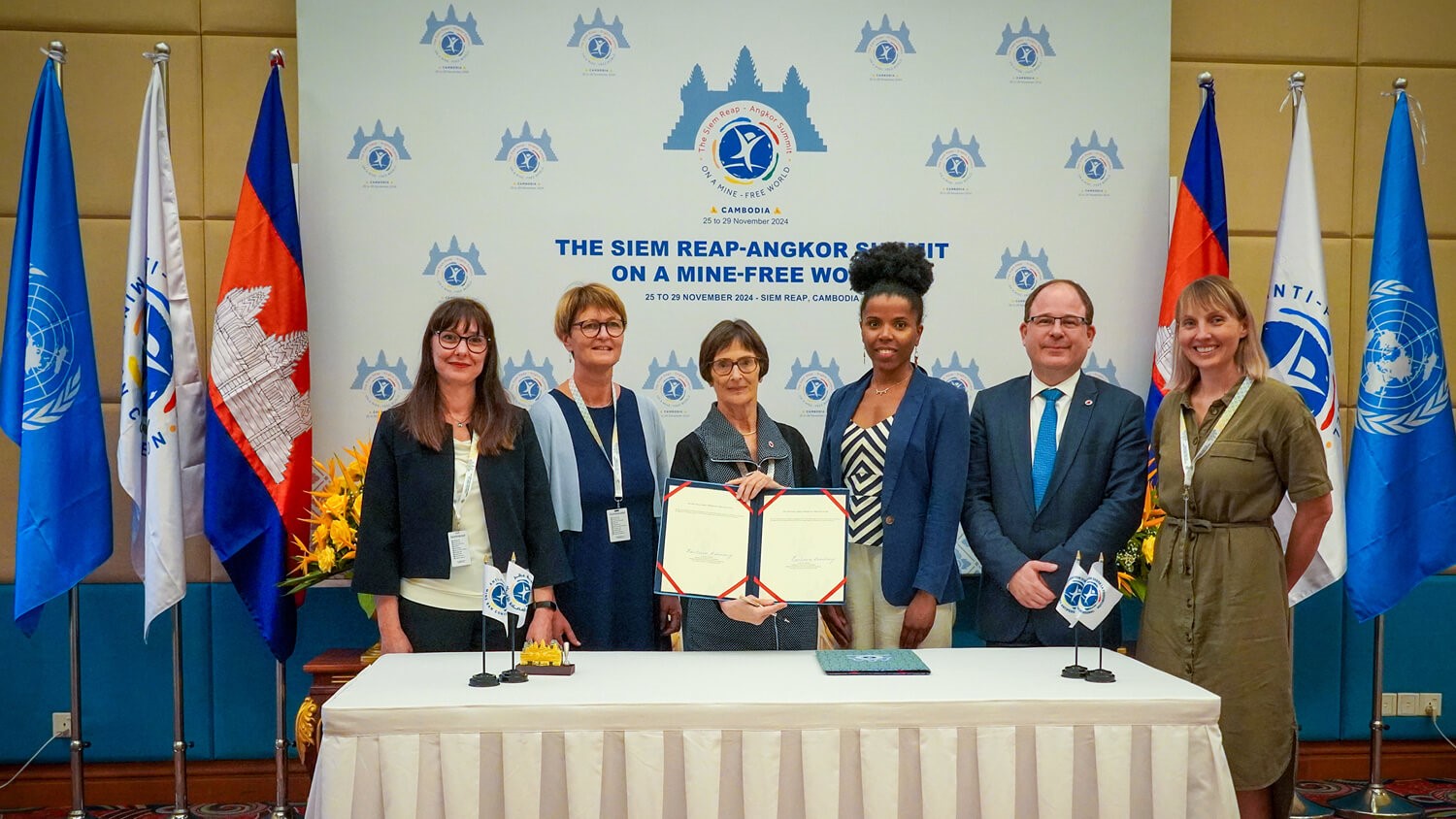FOREWORD
As we navigate the challenges ahead, we take strength from our global community of partners, donors, and colleagues–especially those working on the front lines of mine action.
As we are publishing this report, the mine action community stands at a critical crossroads: needs are escalating, international norms are under pressure, and resources are stretched. In this difficult landscape, our collective efforts to mitigate risks of explosive ordnance are more vital than ever.
Across the globe, explosive ordnance continues to claim lives, obstruct humanitarian efforts, and hinder post-conflict recovery. An estimated 100 million people live under the threat of landmines and other explosive ordnance, with an increasing number of ongoing conflicts exacerbating the danger. According to the latest Landmine Monitor, the number of people killed or injured by landmines and explosive remnants of war has increased by 22% since 2022.
Read more
In 2024, the GICHD focused not only on sustaining support to affected countries but also on reinforcing the foundations of our sector: strong national ownership, robust standards and international norms, as well as lasting partnerships. We worked to ensure that local capacities are not only built but trusted and empowered, that innovation serves people, and that mine action remains an important pillar of humanitarian protection, peacebuilding, and development.
The new APMBC action plan and related frameworks reminded us of the collective promise made decades ago: war has limits. Upholding that promise in today’s world takes courage, creativity, and collaboration. At the GICHD, we remain deeply committed to providing technical expertise, convening power, and exerting leadership to translate our fundamental commitments into action.
2024 was also a year of progress for the GICHD. We supported States Parties to the APMBC to develop the new action plan–officially adopted at the Fifth Review Conference in Siem Reap, Cambodia. This plan sets a clear, forward-looking road map for the next five years, highlighting the importance of inclusivity and localization while capitalizing on over two decades of mine action experience.
We supported the launch and initial implementation of Ukraine’s new National Mine Action Strategy 2024–2033, and we were honoured to assist the governments of Ukraine and Switzerland in organizing the Ukraine Mine Action Conference in Lausanne in October 2024.
The launch of the Innovation Hub was yet another defining moment, sparking fresh ideas and groundbreaking solutions to the complex challenges of mine action. Our ongoing commitment to research has led to continuous advancements, not only in technical aspects but also in addressing pressing global challenges, such as how to build climate resilience through mine action or how inclusive management of mine action data can support both the sector and affected communities.
In this Annual Report, you will find stories that bring this work to life–highlighting our capacity enhancement efforts, our push for innovation, regional collaboration (such as the convening event in the Pacific), our support for national strategies, and how we have continued to serve as bridge builders and convener in multilateral processes.
As we navigate the challenges ahead, we take strength from our global community of partners, donors, and colleagues–especially those working on the front lines of mine action. We also take inspiration from the adaptability and determination shown across the sector this year.
Together, we reaffirm our belief that safe futures are built step by step, through principled action, practical support, and shared purpose.
Thank you for being an essential part of that journey.
Dr Barbara Haering, GICHD President
Ambassador Tobias Privitelli, GICHD Director
GICHD IN NUMBERS
2024 STORIES
HIGHLIGHTS VIDEO
OUR WORK AROUND THE WORLD
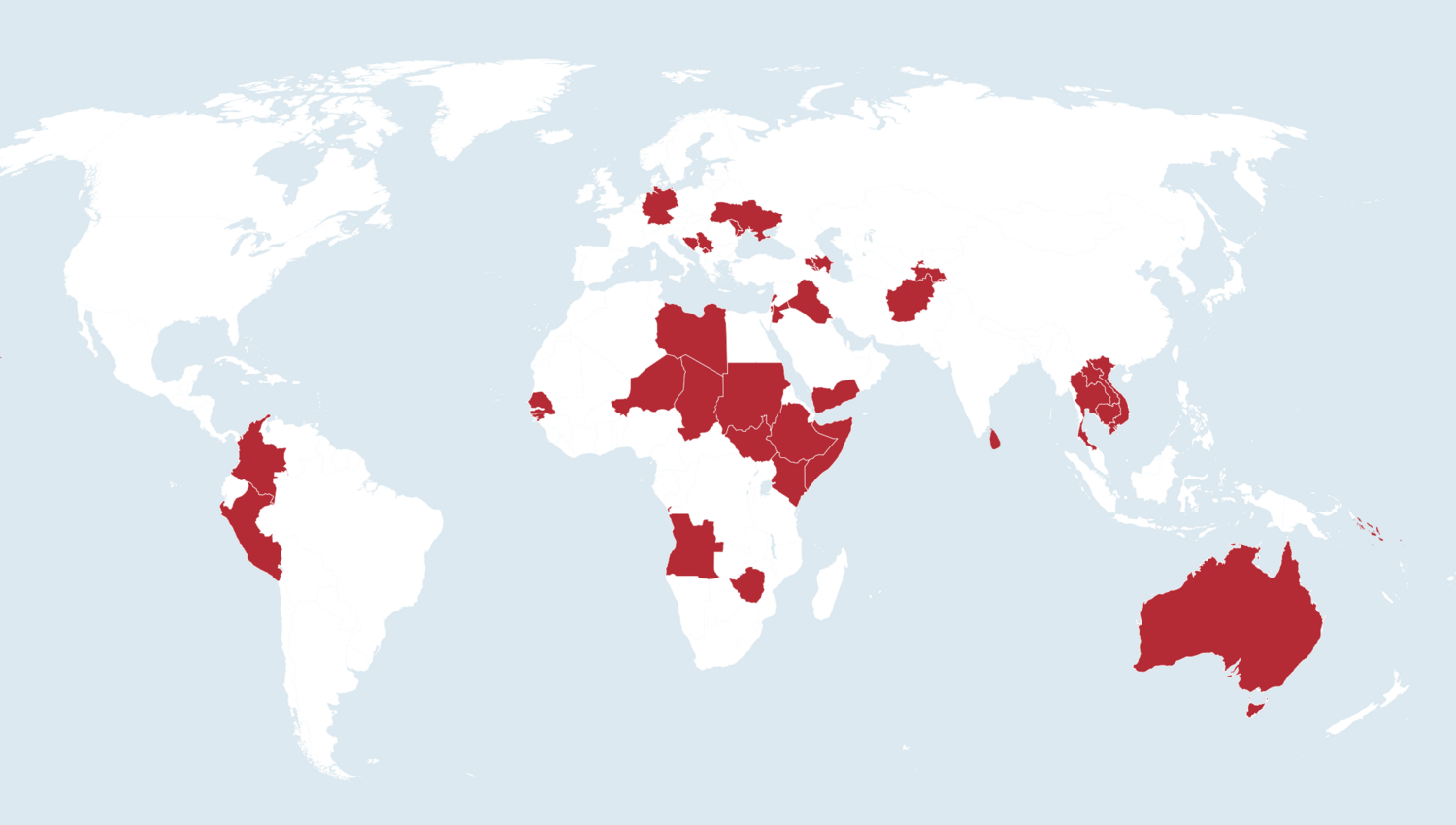
*This map is for illustrative purposes and does not imply the expression of any opinion on the part of the GICHD concerning the legal status of any country or territory, or concerning the delimitation of frontiers or boundaries.
We work with and for partners around the world.
We share information, expertise, and training through long-term partnerships with national and local authorities, donors, the United Nations, other international and regional organizations, non-governmental organizations, operators, companies, and academia.
Our three Regional Cooperation Programmes promote dialogue, knowledge exchange and cooperation between explosive ordnance-affected states in the Middle East and North Africa; Eastern Europe, the Caucasus, and Central Asia; and the Sahel and West Africa regions.
2024 RESULTS IN A NUTSHELL

1
Multilateral processes are informed by evidence and supported by expert advice
- 7 multilateral processes supported to develop and implement legal and political commitments:
APMBC, ATT, CCM, CCW: Amended Protocol II, NDM, RECSA, UN Programme of Action (PoA) on SALW - 6 extension requests reflecting the GICHD’s inputs
3 CCM (Chad, Germany, Lao PDR), 3 APMBC (Guinea-Bissau, Niger, Serbia) - 20 interventions in official meetings
8 statements; 7 presentations in plenary sessions/ side events; 5 side events organised (APMBC, Fifth Review Conference) - At least 36 references to the GICHD’s substantive support; 9 references to logistical support

2
National responses are framed by strategies, regulated by up-to-date standards, and enabled by information management
- 2 strategies reviewed:
Moldova, Peru - 1 strategy developed:
Peru - 3 strategies launched:
Kosovo, South Sudan, Ukraine - 3 strategies implemented:
Germany (GFFO), Sri Lanka, Ukraine - 5 IMAS revised; 2 IMAS developed
- 5 NMAS revised:
Somalia, Sri Lanka, Solomon Islands - 4 NMAS developed:
Ukraine - 1 country established an IM capacity:
Libya - 2 new countries/territories established a well-functioning IM system:
Solomon Islands, Somalia

3
Operations are implemented safely, effectively, and efficiently
- 3 countries/territories supported to improve operational capacity:
Moldova, Peru, Ukraine - 1 organization developed a work plan in relation to the GFA:
Regional Centre on Small Arms (RECSA) - 1 baseline assessment on operational capacity:
Libya - 1 work plan developed to support capacity enhancement:
Libya

4
Gender and diversity are mainstreamed, and equality and inclusion promoted in explosive ordnance risk reduction
- 4 countries supported with establishing a well-functioning GD capacity:
Libya, South Sudan, Ukraine, Yemen - 5 countries; 5 partners implemented GD mainstreaming with the GICHD’s support:
Mauritania, Somalia, South Sudan, Ukraine, Yemen; Democratic Republic of the Congo, Iraq-NGO, NPA-Bosnia-Herzegovina, NPAVietnam, HI-Yemen - The GICHD organized 63 events, with a total of 1,842 participants
- 32% representation of women
- 62% representation of local and/ or national organizations
- 78% representation of people from affected countries/ territories

5
The impact of explosive ordnance risk reduction is enhanced through connections with global agendas
- 5 countries/territories connected EO risk reduction and global agendas in national strategies with the GICHD’s support:
Germany,Kosovo, South Sudan, Sri Lanka, Ukraine - 3 regions connected EO risk reduction and global agendas:
MENA, West and Central Africa, Latin America and the Caribbean - 8 interventions in thematic discussions to strengthen links between EO risk reduction and global agendas
- 2 studies linking EO risk reduction with global agendas developed or published:
Climate resilience priority-setting methodology, Mine action in border areas
PERFORMANCE REPORT
To dive deeper into our work of last year, check out our 2024 Performance Report which is a comprehensive report of all our activities, based on our results-based management (RBM) system.
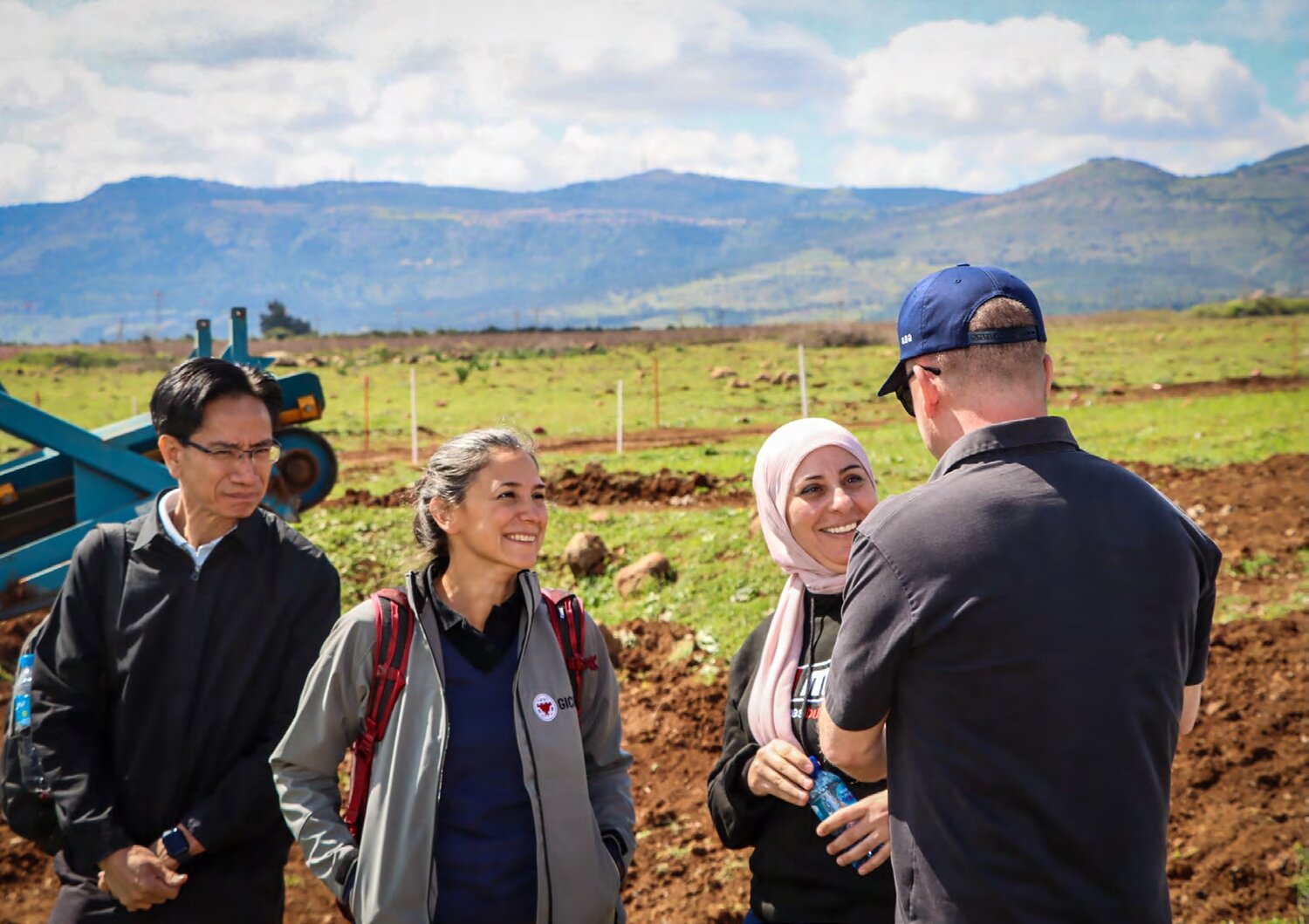
FINANCE
All amounts in CHF
CONTRIBUTIONS
20,879,016
TOTAL REVENUES
21,236,905
DIRECT EXPENDITURES
20,941,283
TOTAL EXPENDITURES
21,236,905
Direct Expenditures
| Personnel expenses | 13,415,067 |
| Travel costs | 1,118,864 |
| Professional fees | 2,135,382 |
| Publications & outreach | 192,355 |
| ICT & Furniture | 797,924 |
| Events | 1,779,760 |
| Administrative & running costs | 1,103,954 |
| In-kind expenditures | 397,977 |
Donors
The GICHD is thankful to all contributors who make its work possible. In 2024, the Centre benefited from core contributions, project funding and in-kind support from the following governments and organizations









The table entry in relation to Switzerland, includes funds received by the Federal Department of Defence, Civil Protection and Sport (DDPS) and the Federal Department of Foreign Affairs (FDFA).



